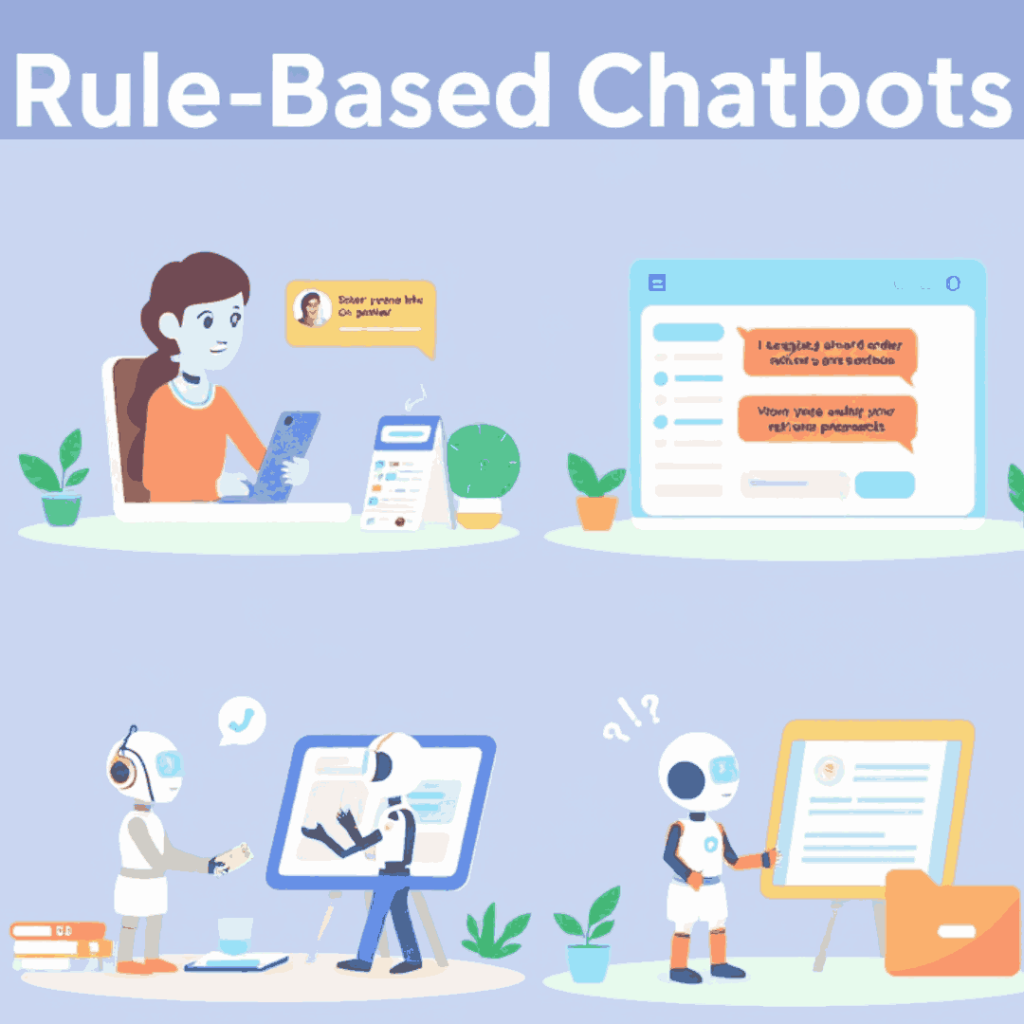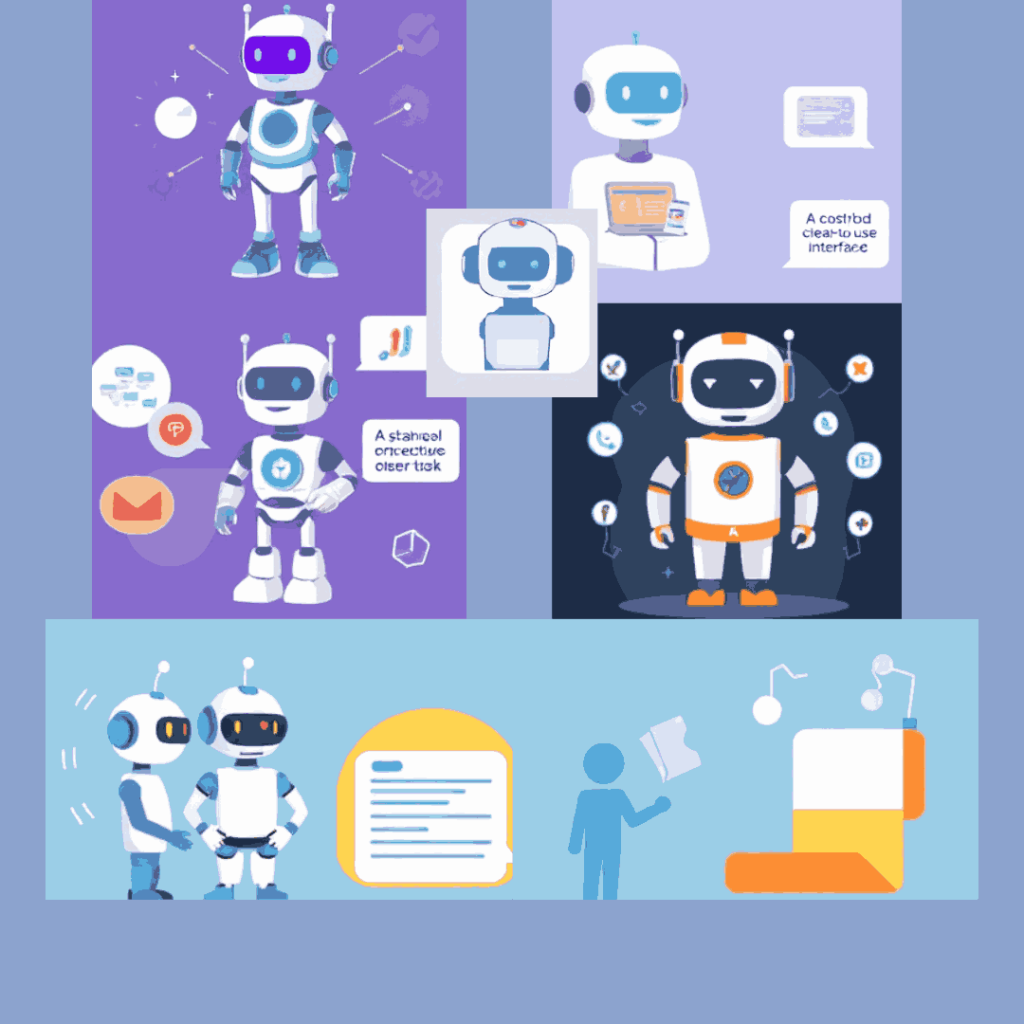Rule-Based Chatbots
Admin LetMeCheck
September 11, 2024
Rule-Based Chatbots: A Comprehensive Guide

Welcome to the fascinating world of chatbots! If you’re just starting out in the content creation space and are curious about rule-based chatbots, you’ve come to the right place. Let’s dive into the essentials of rule-based chatbots with a casual and reader-friendly approach.
Key Highlights
- Rule-based chatbots operate based on a fixed set of predefined rules and respond to user inputs using a straightforward “if-then” logic, making them simple yet effective for handling repetitive tasks.
- Their primary strength lies in their predictable behavior and ease of development, which makes them an accessible solution for businesses with specific, routine customer interactions.
- They are particularly useful for businesses that need to manage frequent queries or tasks efficiently without investing in more complex technologies, offering a cost-effective approach to While they are reliable for straightforward tasks, rule-based chatbots require regular updates to stay relevant and may struggle with handling complex or unexpected user inputs.
- Rule-based chatbots provide a solid foundation for automating routine interactions but may not be suitable for more dynamic or nuanced conversations. They are a practical choice for businesses seeking a manageable and cost-effective automation solution.
What are Rule-Based Chatbots?
Rule-based chatbots are the earliest type of chatbot technology, driven by a set of predefined rules. These rules are essentially a list of “if-then” statements. For example, if a user says “Hello,” the chatbot might respond with “Hi there!” The chatbot’s responses are based on specific triggers or keywords, making it fairly straightforward but somewhat limited in its capabilities.
What are the Key Characteristics of Rule-Based Chatbots?
- Predefined Responses: Rule-based chatbots rely on a fixed set of responses programmed by developers. They follow a rigid flow and can only answer questions or handle tasks that fall within their programmed rules.
- Trigger-Based: They use keywords or phrases to identify what a user wants and then respond accordingly. For instance, if the keyword “refund” is detected, the chatbot might provide information on how to request a refund.
- Simple Logic: These chatbots follow straightforward logic. There’s no learning or adaptation over time; they stick to the rules they’ve been given.
- Predictable Interactions: Because the chatbot’s responses are predefined, interactions are predictable and consistent, though not always natural.
What Are the Advantages of Rule-Based Chatbots?
- Easy to Develop: Rule-based chatbots are relatively simple to create. Developers can quickly program them with specific rules without needing advanced AI or machine learning.
- Cost-Effective: They are generally less expensive to build and maintain compared to more advanced AI chatbots.
- Predictable Behavior: Since the responses are fixed, there are fewer surprises in terms of how the chatbot will behave. This can be beneficial for maintaining control over user interactions.
- Reliable for Specific Tasks: If you need a chatbot to handle straightforward tasks or answer common questions, a rule-based system can be quite effective.
What Are the Disadvantages of Rule-Based Chatbots?
- Limited Flexibility: Rule-based chatbots can only respond to what they’ve been programmed to recognize. They struggle with questions or phrases that fall outside their predefined rules.
- No Learning Ability: Unlike AI-driven chatbots, rule-based chatbots don’t learn or improve over time. Their responses don’t evolve based on user interactions.
- Poor Handling of Complex Queries: If a user’s question is too complex or doesn’t match any of the rules, the chatbot might provide a confusing or irrelevant response.
- Requires Continuous Updates: To stay relevant, rule-based chatbots need manual updates whenever new queries or tasks arise. This can be time-consuming.
What Are Some Use Cases and Examples of Rule-Based Chatbots?

- Customer Support: Simple customer support bots that answer frequently asked questions like store hours, return policies, or contact information.
- E-commerce: Chatbots that help users track their orders or provide basic product information based on predefined rules.
- Appointment Scheduling: Bots that allow users to book, reschedule, or cancel appointments using fixed options.
- Lead Generation: Chatbots on websites that engage visitors with predefined questions to qualify leads or gather contact information.
- Surveys and Feedback: Bots that ask users a series of predefined questions to collect feedback or conduct surveys.
What Are the Limitations and Challenges of Rule-Based Chatbots?
- Scalability Issues: As the number of possible user inputs grows, maintaining and updating the rule set can become cumbersome and impractical.
- User Experience: Interactions can feel mechanical or frustrating if the chatbot fails to understand or properly respond to user inputs.
- Inflexibility: Rule-based chatbots are not suited for handling unexpected or nuanced conversations, making them less adaptable to diverse user needs.
- Maintenance Overhead: Regular updates and rule adjustments are necessary to keep the chatbot useful, requiring ongoing attention from developers.
- Lack of Personalization: Since rule-based chatbots don’t learn from user interactions, they can’t offer personalized experiences or adapt to individual user preferences.
Conclusion

In summary, rule-based chatbots are a foundational technology in the world of automated customer interactions. They operate based on a set of predefined rules and offer a straightforward solution for handling repetitive tasks and frequently asked questions. While they come with their own set of advantages, such as ease of development and cost-effectiveness, they also have limitations, including a lack of flexibility and the need for continuous updates.
For businesses looking to provide immediate, predictable responses to common inquiries or tasks, rule-based chatbots can be incredibly effective. However, if your needs involve more complex interactions or a more dynamic user experience, you might want to explore advanced AI-driven chatbots that can learn and adapt over time.
Understanding the strengths and weaknesses of rule-based chatbots will help you make an informed decision about whether they’re the right fit for your needs. As technology continues to evolve, combining the reliability of rule-based systems with more advanced AI capabilities might offer a balanced approach to optimizing customer interactions.
FAQ
1. Can rule-based chatbots handle multiple languages?
Yes, but each language needs its own set of rules and responses. This can significantly increase the complexity of maintaining the chatbot.
2. Are rule-based chatbots suitable for all types of businesses?
They work best for businesses with specific, repetitive tasks or common customer queries. For more dynamic interactions, a more advanced chatbot might be better.
3. How can I improve a rule-based chatbot’s performance?
Regularly update the rules based on user feedback and common queries to improve its effectiveness and relevance.
4. Can rule-based chatbots be integrated with other systems?
Yes, they can be integrated with CRM systems, databases, and other tools to fetch or update information, though this often requires additional development work.
5. What’s the future of rule-based chatbots?
While they may not be as advanced as AI-driven bots, rule-based chatbots will continue to be useful for straightforward tasks and will likely evolve to include more sophisticated features over time.
